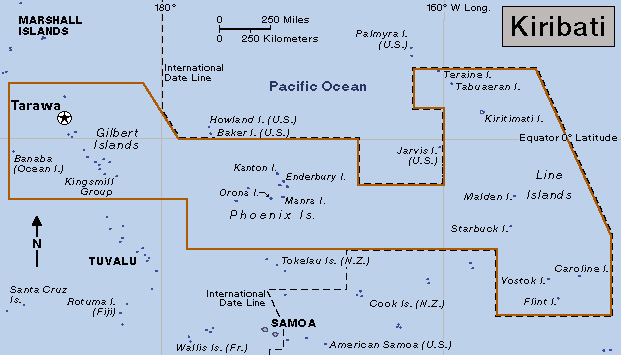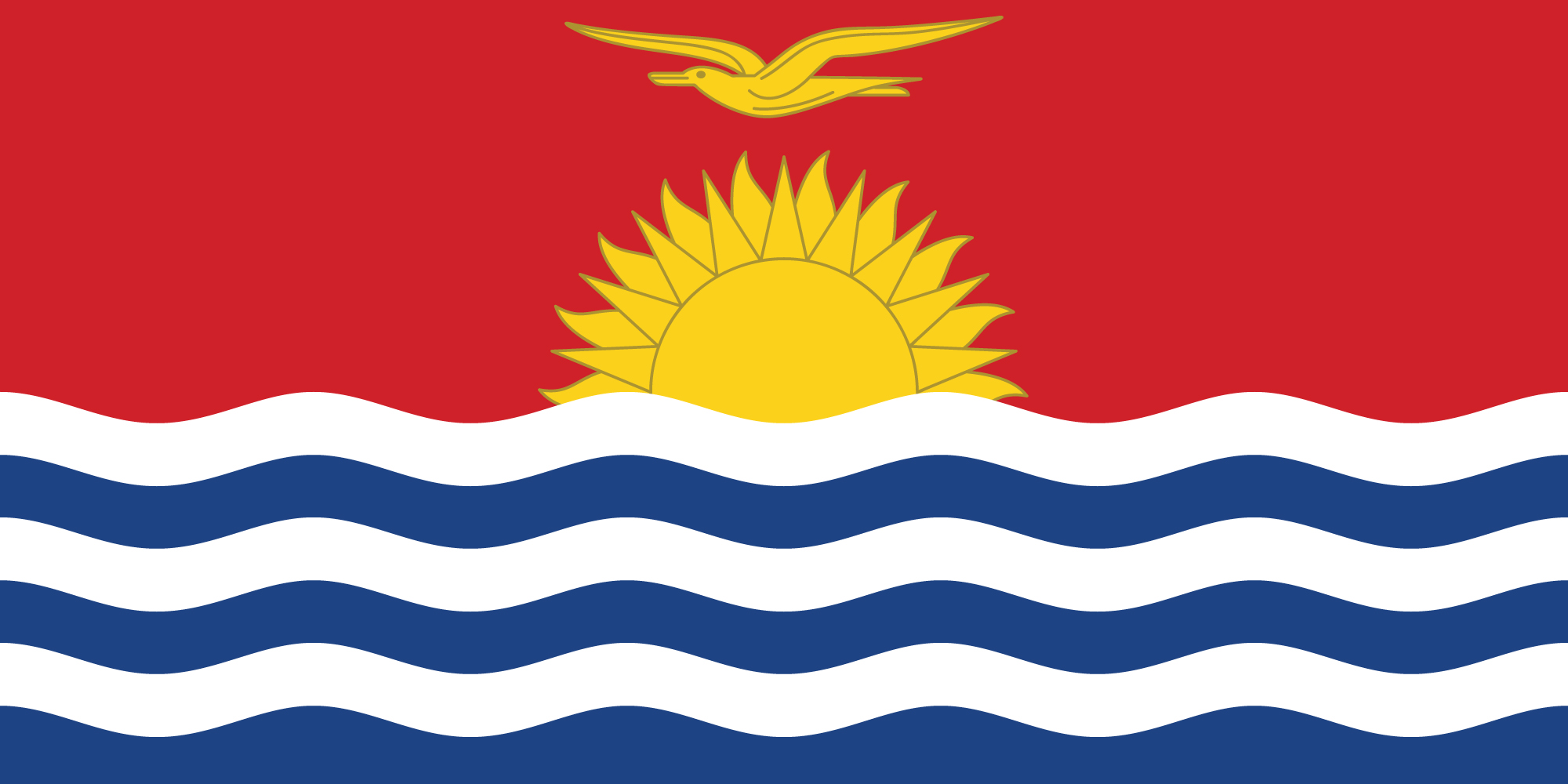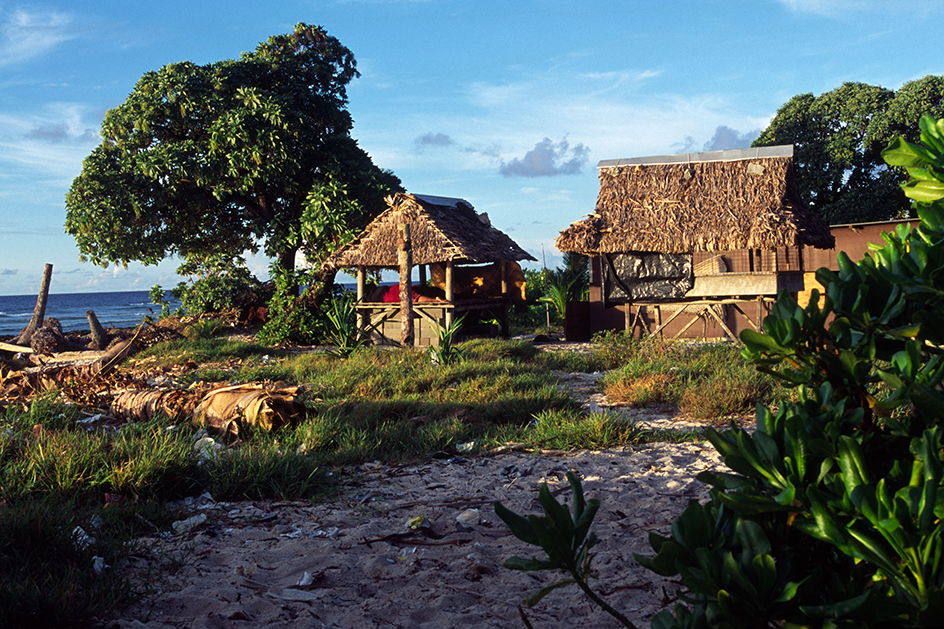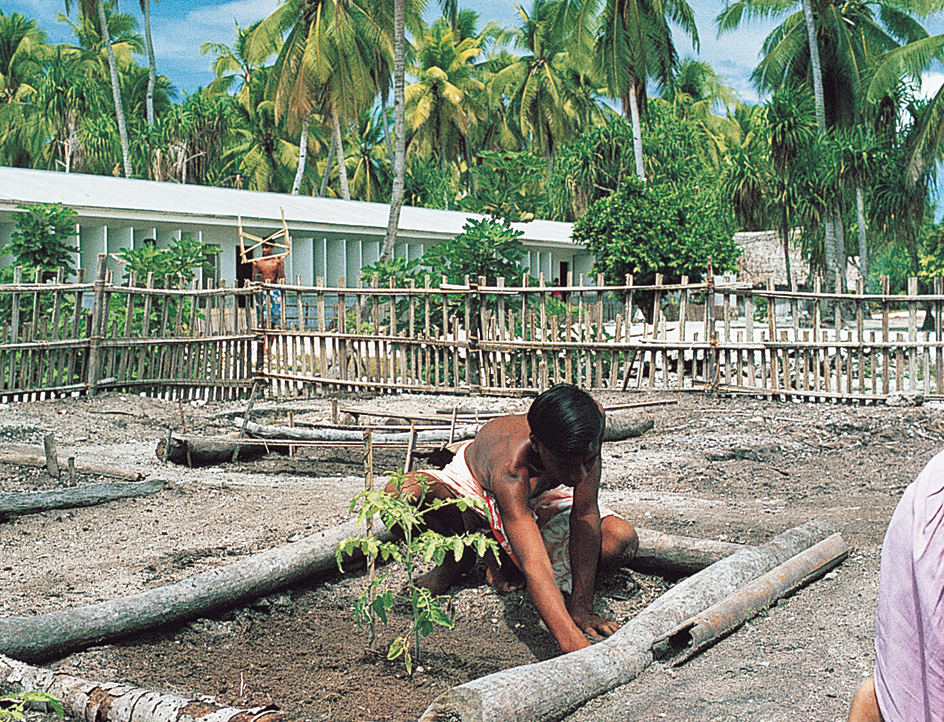Kiribati << KIHR uh `bas` >> is a small country made up of 33 islands in the central Pacific Ocean. It consists of three island groups: the 16 Gilbert Islands and Banaba (formerly called Ocean Island), the 8 Phoenix Islands, and 8 of the Line Islands. These islands spread across about 2 million square miles (5 million square kilometers) of the Pacific Ocean.

Kiribati has a total land area of 313 square miles (811 square kilometers). One island, Kiritimati Atoll, covers more than half of this area. Kiribati has a population of about 123,000. About 90 percent of the people live in the Gilbert Islands. Tarawa, an atoll (ring-shaped reef enclosing a lagoon) in the central Gilbert Islands, is the capital of Kiribati.
The United Kingdom ruled much of what is now Kiribati from 1892 to 1979, when Kiribati became an independent nation. The country’s basic unit of currency is the Australian dollar. Its national anthem is “Teirake Kain Kiribati” (“Stand, Kiribati”).
Government.
Kiribati is a republic headed by a president. The president is elected to a four-year term by the people from among candidates nominated by the parliament, the nation’s lawmaking body. The parliament consists of a single chamber called the House of Assembly elected by the people to four-year terms. Local councils administer local island government affairs. Unimane (councils of elders) handle local village matters.

People.
Most of the people of Kiribati are Micronesians. The islanders call themselves I-Kiribati. Most of them live in rural villages of a few to more than 100 dwellings clustered around a church and a maneaba (meeting house). Many of the dwellings are made of wood and leaves of coconut trees. Cement block houses with iron roofs are becoming more common.

The I-Kiribati are dependent on the sea. Fishing and the making and sailing of canoes form an important part of their life. The islanders grow most of their own food, which includes bananas, breadfruit, papaya, pandanus fruit, sweet potatoes, and babai (giant taro). They also raise pigs and chickens. On Tarawa, people rely more on imported foods. The islanders used to wear soft, finely woven mats but now wear light cotton clothing.

The language of the islanders is Gilbertese. But most of them also speak some English, which is used in official communications. Kiribati has dozens of elementary schools and several high schools.
Land and climate.
Almost all the islands of Kiribati are coral reefs. Many are atolls. Kiribati has a tropical climate, with temperatures of about 80 °F (27 °C) the year around. The northern islands receive about 120 inches (300 centimeters) of rain annually. The other islands have a yearly rainfall of about 40 inches (100 centimeters).
Economy.
Kiribati is a developing nation. Fishing licenses, foreign aid, remittances (money sent home) from I-Kiribati seafarers, and tourism are important to Kiribati’s economy. The country exports copra (dried coconut meat), fish, and seaweed. Most of the nation’s commerce goes through Tarawa, which has docks and an international airport. Tarawa also has an Earth station, which transmits and receives international communications through a satellite in space.
History.
No one knows the origins of the I-Kiribati. The islands are believed to have been inhabited when Samoans settled there between the 1000’s and the 1300’s. There is evidence that the I-Kiribati lived there long before the Samoans. In the 1500’s, Spanish explorers became the first Europeans to sight the islands.
In 1892, the United Kingdom took control of the Gilbert Islands and the neighboring Ellice Islands to the south. The United Kingdom gained control of Ocean Island in 1900. In 1916, the British made these islands the Gilbert and Ellice Islands Colony. Some of the Line Islands, and the Phoenix Islands, were later added to the colony.
During World War II (1939-1945), Japanese troops occupied several of the islands. The United States Marines invaded Tarawa in 1943 and defeated the Japanese in one of the bloodiest battles of the war.
The Ellice Islands separated from the colony in 1975 and became the independent nation of Tuvalu in 1978. The remaining islands in the former Gilbert and Ellice Islands Colony gained independence as Kiribati on July 12, 1979.
In 2006, the government of Kiribati created the Phoenix Islands Protected Area, one of the world’s largest marine reserves.
See also Gilbert Islands; Kiritimati Atoll; Line Islands; Tarawa; World War II (Island hopping in the Central Pacific).
